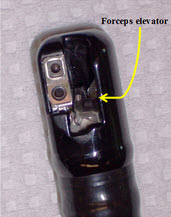New Protocol Offers Hospitals Option to Detect Bacterial Contamination or Duodenoscopes
Ting combat antibiotic-resistant infections and protecting patient's are National Priorities. Recent outbreaks or CRE ( carbapenem-resistant Enterobacteriaceae ) related to a type of endoscope called a duodenoscope have occurred without identified lapses of infection control.
| With input from healthcare facilities, professional partners and stakeholders, the CDC HAS overdeveloped an interim protocol for facilities That wanna duodenoscopes Their test for contamination with bacteria , CRE-including and after the cleaning and disinfection process. These interim protocols providence a step-by-step approach for facilities wanting to check Whether scopes Could be a source of infection for patients. Included are suggestions for how scopes shouldering be sampled, options for the frequency and types of sampling, how to test Those samples in a lab, and how to interpret results. Sampling is not a substitute for proper cleaning and disinfection ("reprocessing") or thesis scopes. The interim protocols are Intended to supplement and not replace manufacturer- recommended reprocessing procedures. |  |
CDC is working with partners-including the US Food and Drug Administration, medical specialty societies, subject matter experts, and state and local health departments to understand and address Further The Possibility of bacteria transmission related to duodenoscopes. Until more is known, this interim protocol can providence hospitals with an additional tool in Their continued efforts to protect patient's from infections.
Learn more about the interim protocols from Michael Bell, MD, Deputy Director of CDC's Division of Healthcare Quality Promotion at CDC's Safe Healthcare Blog .
Read the protocols on the CDC's website .
댓글 없음:
댓글 쓰기